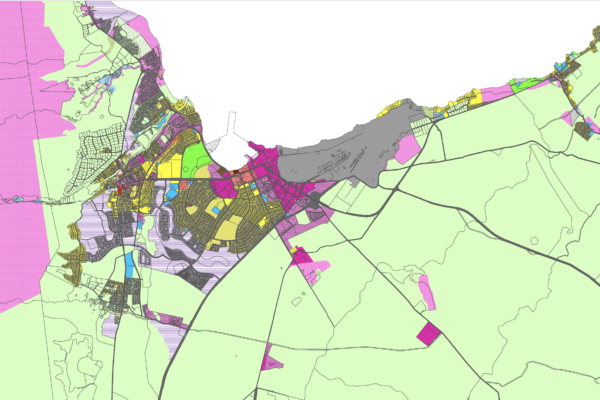The Maui News
By HARRY EAGAR, Staff Writer
July 25, 2010
SPRECKELSVILLE – An innovative and privately funded beach replenishment project on Stable Road has been suspended early.
Neighbors to the west, who say their beach has been eroded, call it a complete failure, while the hui that tried bringing in offshore sand admits to disappointment but still considers it an overall success.
The Department of Land and Natural Resources is studying the effort and expects to make a determination sometime in August about whether to require that the sand-filled groins called "Geotubes" should be removed.
Paul Hanada, a diver who was skeptical from the start, was out watching the work nearly every day that sand was pumped from offshore, and he made a video of the pipe where it broke loose from its moorings, which is posted on YouTube (www.youtube.com/watch?v=4QBkYIt35oY).
Hanada emphasized that he isn’t against sand replenishment for beaches, and even has hopes for using sand from offshore. That is preferable, he said, to a long-running sand replenishment project farther east, at Sugar Cove condominiums. That one uses mined sand from Maui Lani, which includes silt, which divers say chokes and kills the reef.
You have to be a diver and a close observer to see why that is harmful, Hanada said. A snorkeling survey over the reef may not show changes, but "the silt fills all the little pukas, where the small animals live."
If sand has to be used, he said, it’s better to use sand from offshore, which is similar to the beach sand and could be cleaner.
One problem with the Spreckelsville project was that although there may be a whole lot of sand in Kahului Bay, there turned out to be much less than anticipated in the spot chosen to mine.
But it was bad weather that caused the project to be suspended ahead of schedule, said Jeffrey Lundahl, a homeowner on the beach and president of the Stable Road Beach Restoration Foundation, a hui that laid out big bucks to try to slow down the erosion of the beach.
He said residents never expected to stop the erosion, let alone permanently reverse it, but they did hope to slow it down.
Dolan Eversole, a coastal geologist with the DLNR Office of Conservation and Coastal Lands, said the Stable Road beaches have been retreating at a comparatively fast rate for half a century.
The area is already heavily altered with old seawalls, groins, piles of rocks and other structures that affect the stability of the beaches.
Eric Pung, who lives just west of the project, is the critic who called the project a total failure, an opinion shared by some of his neighbors. He has pictures showing that the beach where his family has lived nearly 50 years is badly eroded this month, with rocks showing.
The sand moves with the seasons, he said, east in winter, west in summer. Just two years ago, DLNR biologist Skippy Hau was able to rescue the nest of a green sea turtle in front of Pung’s place. Summer is nesting season, but a turtle would have a hard time finding enough sand to nest in this summer.
Lundahl, however, said that since construction stopped, "the normal summer beach erosion to date is significantly reduced. I therefore still consider the project a success.
"It will be telling next spring after full summer and winter conditions to really see how the temporary sand retention devices perform and if any modifications are necessary and desirable."
Sam Lemmo, administrator of the Office of Conservation and Coastal Lands, said he plans to inspect the project soon, probably Aug. 5, when he is coming to Maui for a hearing on another matter. Until then, he is not prepared to say what his office will recommend to the state Board of Land and Natural Resources.
As originally proposed, the Geotubes were to have been left in place for up to three years to allow for an assessment. After that, there could have been consideration to giving a permit to make them permanent.
Since the proposed restructuring of the beach was not achieved, Pung would like them removed as soon as possible.
"It was a performance-based project," said Lemmo, so removal is an option.
The project was supported by Jeff Hunt, then the county planning director, when it was proposed, and state officials also were hopeful.
With erosion of beaches fronting on valuable buildings a problem throughout the state, a method of rebuilding beaches without creating more problems elsewhere would be welcome, even if offshore sand mining is more expensive than digging it up on shore (where, however, easily mined sources are running short).
A sand-mining beach replenishment is under way at Waikiki, for example.
Lundahl said the Spreckelsville project was expensive, although he did not give an exact amount. "If you look at the future value of the real estate, it’s affordable. It’s not cheap," he said.
The past solution of building a seawall or groins is now considered unacceptable. Too many beaches have disappeared, as at Kalama Park in Kihei.
Dynamic beaches, like Kaanapali, widen and narrow seasonally; and over longer periods tend to retreat, since scientists believe the sea level is rising and Maui is sinking under its own weight and that of the Big Island, massive mountains which are pressing a gigantic dimple into the seafloor.
Although a beach may move inland naturally, its typical seasonal width may not change much, because it eats new sand from the foreshore to replace the sand that currents have carried away.
When people build roads or buildings, that shuts off the supply of new sand and the beach disappears.
Lemmo said the Stable Road project "is the first of its kind" in Hawaii, and "a lot of thought went into allowing change to occur at this site."
"Two and a half years went into permitting" the project, Lundahl said. "We wanted to slow down the erosion, not to stop it."
When the pumping stopped June 9, "we got about less than half" the intended amount. The goal had been 10,000 cubic yards.
Lundahl called a halt to the project because he was concerned someone would get hurt in the choppy waves.
The pipeline was anchored by pairs of small concrete blocks and fiber straps. Hanada’s video shows the blocks bouncing up from the bottom in the current and slamming down on the coral.
In places, the cord snapped and the untethered pipe swept back and forth over the reef, "planing it down," in Hanada’s words.
He wants the state land board to consider sanctions for the reef damage, as happened when a boat sank at Molokini and when the state dumped concrete blocks on an artificial reef in Kihei.
Hanada and his watermen friends are critical of the Stable Road project’s details but not opposed to replenishment with ocean sand, which should closely match the beach sand.
"The pipe and all the accessories like the concrete blocks caused tremendous damage. They should use the dredge material from harbors to minimize the impact on the reef," Hanada said.
They are strongly opposed, however, to the Sugar Cove method. "The Sugar Cove project is the worst," Hanada said.
"They use dirty, fine-grained inland sand that covers and suffocates the living reef. It destroys the marine ecosystem, and they continue to use it," he said. "They are only concerned about the sand in front of their vacation rentals. This type of replenishment should be banned."
Sugar Cove has been replenishing its beach intermittently over the years under county permits, although Lemmo said that his office may take a look to see whether DLNR ought to be involved.
Sugar Cove representatives could not be reached for comment.
Pung said that if ocean sand were used, it should be sucked into a barge, taken to a harbor, unloaded into trucks and hauled to the beach. He acknowledged that that would add expense to a method that already is costly.
However, Pung said that in general oceanfront property owners should not be so quick to act. His family has seen the beach shrink and grow over the decades, and he is not alarmed by a single winter of more than usual beach retreat.
He said the Geotubes, which are smooth and difficult to climb over, also impede lateral access along the beach.
Lundahl said the top tubes on the middle groins were removed, because the sand had not been built up as much as planned. The outer groins were always one layer high.
Had the project gone according to design, the Geotubes would have been buried.
As it turned out, Pung said, "they made that beach a private beach they boxed it in."
Lundahl responded, saying: "I request that people give it time before judgment."
As part of the permit requirements, the hui is monitoring the benthic environment and testing water quality.
"Preliminarily, it appears that there are no long-term, adverse environmental impacts," he said.
And he said normal sand movement is occurring now that the post-construction beach is reaching an equilibrium.
But Pung is not convinced. He wrote to Eversole, saying "I’m afraid if those Geotubes stay in any longer the sand will never come back."



